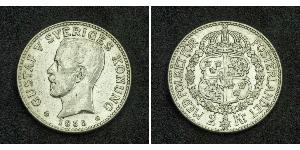Antoninianus and Tetradrachm
The Antoninianus and Tetradrachm were both ancient coin denominations used in different parts of the ancient world, particularly during the Roman and Hellenistic periods, respectively.
Antoninianus:
The Antoninianus was a type of Roman silver coin introduced by the Emperor Caracalla (reigned 198–217 AD) in the early 3rd century.
It was initially intended to be a double-denarius coin, featuring a higher silver content than the denarius.
The Antoninianus typically depicted the reigning emperor on the obverse (front) and various symbolic motifs on the reverse (back).
Over time, the silver content of the Antoninianus decreased, and it became a predominantly bronze coin, often with a silver wash.
The Antoninianus was widely circulated throughout the Roman Empire and was used for a variety of transactions.
It remained in use until the monetary reforms of Emperor Aurelian in the late 3rd century.
Tetradrachm:
The Tetradrachm was a silver coin used in various ancient Greek city-states and kingdoms, as well as in the Hellenistic kingdoms that succeeded Alexander the Great's empire.
It was typically equivalent to four drachmae and was one of the most widely circulated and recognized coins of the ancient world.
The Tetradrachm featured a variety of designs depending on the issuing authority but often depicted the ruling deity or a portrait of a ruler on the obverse and a symbolic motif or scene on the reverse.
Tetradrachms were minted in significant quantities by various Greek cities and kingdoms, including Athens, Macedon, Ptolemaic Egypt, and Seleucid Empire.
Due to their widespread use in trade and commerce, Tetradrachms were often accepted as currency beyond the borders of their issuing authority.
Both the Antoninianus and Tetradrachm played important roles in the economies of their respective periods and regions, and they are prized by collectors today for their historical significance and artistic value.
You may be interested in following coins
2024-04-26
- New coin is added to 2 Krone Sweden Silver Gustaf V of Sweden (1858 - 1950)
2 Krone Sweden Silver Gustaf V of Sweden (1858 - 1950)
group has 14 coins / 13 prices
⇑
1938, Kingdom of Sweden, Gustaf V. Silver 2 Kronor Coin. Low Pop 5/1! PCGS MS65!
Mint Year: 1938
Reference: KM-787.
Denomination: 2 Kronor
Mint Place: Stockholm (Royal Mint)
Con ...
2024-04-26
- Historical Coin Prices








